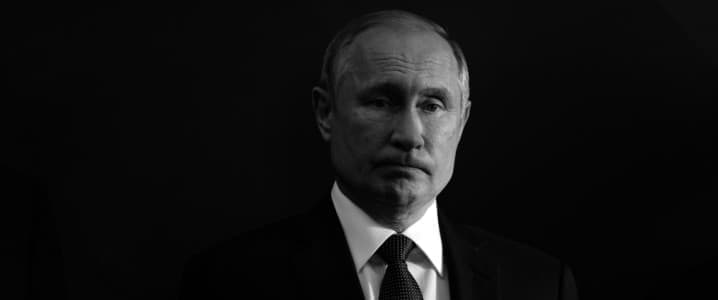Secretary of State Marco Rubio, during his recent meeting with Russian Foreign Minister Sergei Lavrov, called on the Kremlin to “take meaningful steps toward a durable resolution of the Russia-Ukraine war.”
Estonia’s Foreign Minister Margus Tsahkna, during a September 24 appearance at Columbia University’s Harriman Institute, said no one should be holding their breath waiting for Russia to make sincere moves to stop the bloodshed in Ukraine. The war, he suggested, acts as the glue that keeps Vladimir Putin’s regime together.
“Putin is a warlord. He is fighting for his life, for his system,” Tsahkna stated. “His peace is more war.”
The clearest way to get Putin to stop is for the European Union and United States to take well-coordinated and resolute action to “push Putin into a corner,” he said.
Estonia’s message about Russia’s implacable aggression has been consistent for decades. But it has only recently started gaining traction in all corners of the EU. Tsahkna said he was pleased to see at the UN General Assembly a growing awareness of the global security threat posed by Russian aggression, not just among European states, but also among those on other continents.
The Kremlin’s confrontational tactics, highlighted by recent drone and military jet incursions into NATO member states’ airspace, including Poland and Estonia, are intended by the Kremlin to sow fear and dissension, Tsahkna said. Those sentiments were echoed by Danish officials following a coordinated drone incident September 24 that closed several Danish airports. Many observers suspect Russia was behind the incident, although there is no conclusive evidence connecting Moscow to the episode.
“The aim of these [incidents] is to create fear, division and make us feel afraid,” Danish Justice Minister Peter Hummelgaard told journalists.
Tsahkna confirmed that fear about Russian aggression is real and spreading. But he emphasized it is having the opposite of the Kremlin’s intended effect. Instead of widening divisions, fear is acting as a galvanizing force, prompting European states to take the Russian threat more seriously, and fostering greater determination to take robust and unified action to any potential future provocation.
“Next time, we’ll shoot them down,” he said, referring to a potential, future violation of NATO airspace.
US President Donald Trump’s inconsistent policies towards NATO and Russia are also helping to forge greater EU unity to increase defense spending and assume a more forceful defense posture, Tsahkna said. He admitted that many European states had acted like “lazy cats” since the end of the Cold War, overly depending on the United States to ensure continental security. Now, EU states are rapidly building up their own capacity. “Europe has lots of resources,” he said.
A significant hike in defense spending is causing some budgetary pain for Estonians, but citizens remain acutely aware of the legacy of the Soviet annexation in 1940 and prefer paying high taxes to the prospect of enduring another era of “terror,” Tsahkna said.
The Estonian foreign minister described Hungarian leader Viktor Orban as an impediment to the provision of more robust European support for Ukraine, as well as efforts to confront Russian aggression. But Orban’s blocking ability is eroding, he said.
“We’re finding more and more ways … to act,” Tsahkna said.
More Top Reads From Oilprice.com
